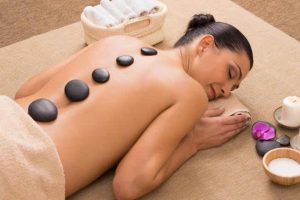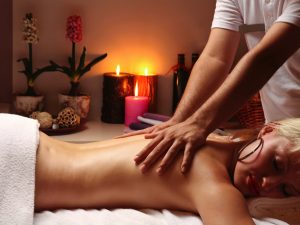Restore & Balance Your Vitality, Recover Your Health with Therapeutic Massage
In today’s fast-paced world, stress, physical ailments, and fatigue are increasingly common challenges that hinder our overall well-being. One of the most effective ways to counteract these issues and restore vitality is through therapeutic massage. Not only does it offer immediate relief from discomfort, but it also fosters long-term health benefits. Whether you’re seeking relief from chronic pain, stress reduction, or improved mobility, understanding what is therapeutic massage and its myriad effects on your body can help you make informed decisions about your health journey.
Through the power of therapeutic massage, you can unlock a path to physical relaxation, mental clarity, and energetic balance. This comprehensive guide explores all aspects of therapeutic massage, including its types, mechanisms, how to choose the most suitable method, and the distinctions from relaxation massage. By the end of this article, you will gain insights into how this ancient healing technique can be adapted to meet your unique health needs and restore your vitality.

Therapeutic massage
Imagine a healing practice rooted deeply in centuries of tradition, refined over generations, and tailored today with modern techniques to suit individual needs. Therapeutic massage encompasses a variety of manual manipulations aimed at improving health, alleviating pain, and enhancing overall wellness.
Therapeutic massage is not merely about relaxation; it is a strategic application of pressure, movement, and technique designed to target specific muscular or neurological issues. This type of massage considers your overall health condition, lifestyle, and specific complaints to craft a personalized treatment plan. It’s often integrated into wider health and wellness programs, including physical therapy, chiropractic treatment, and sports medicine.
Understanding that therapies must be personalized is crucial to achieving the greatest benefits. Each person responds differently, and effective therapeutic massage practitioners assess posture, muscle tone, flexibility, and underlying health issues to determine which techniques will be most beneficial. Given the increasing popularity of alternative and complementary medicine, therapeutic massage is gaining recognition as an essential component of holistic health care.
Furthermore, therapeutic massage can involve a variety of techniques—such as deep tissue massage, trigger point therapy, myofascial release, or neuromuscular therapy—to address different conditions. Its goals extend beyond pain relief, encompassing improved circulation, lymphatic drainage, enhanced immune function, and stress reduction, making it a versatile recovery tool.

The Scope of Therapeutic Massage
The scope of therapeutic massage varies widely based on individual needs and practitioner expertise. It can be used to address specific dysfunctions like stiff neck, back pain, sciatica, sports injuries, or to improve flexibility and muscle tone in general.
Benefits go beyond the physical realm, impacting mental and emotional states. Many clients report feeling calmer, more focused, and more energetic after treatment. This holistic effect underscores the importance of understanding what is therapeutic massage and its broader influence on health.
The Practitioner’s Role in Therapeutic Massage
A skilled therapist evaluates your physical condition, asking about your medical history, lifestyle, and specific problems before designing a treatment plan. Skilled therapists are adept at customizing their techniques, adjusting pressure, and combining various modalities to maximize benefits.
Practicing therapeutic massage requires not just technical skill but also empathy and intuition. Each session is tailored to facilitate healing, reduce symptomatic distress, and address root causes. Knowing the professional standards and credentials of your chosen practitioner is crucial for safe and effective treatment.
Integrating Therapeutic Massage into Healthcare
More healthcare providers now incorporate therapeutic massage into the treatment protocols for musculoskeletal disorders, stress management, and rehabilitation. It’s a recognized component of integrative medicine, often recommended alongside physical therapy, chiropractic care, and acupuncture.
The integration showcases how therapeutic massage complements other treatments by improving tissue health, reducing inflammation, and facilitating recovery. Such synergy enhances treatment outcomes and accelerates return to health and vitality.
What is Therapeutic Massage?
What is therapeutic massage? is a question often asked by those new to this healing art. It is a specialized form of bodywork focused on healing and functional improvement rather than pure relaxation. Unlike superficial massage techniques, what is therapeutic massage emphasizes deep tissue work, targeted pressure, and therapeutic protocols.
This type of massage involves specific techniques designed to resolve muscle dysfunction, reduce pain, and improve circulation. It addresses soft tissue restrictions, adhesions, tension points, and nerve entrapments to restore optimal movement and function.
What makes therapeutic massage unique is its focus on pathology rather than purely soothing sensations. It’s a scientifically grounded approach that considers anatomy, physiology, and biomechanics, often working in tandem with other medical interventions. Its purpose is to promote self-healing and restore balance in the musculoskeletal and nervous systems.

Core Principles of Therapeutic Massage
The core principles that define what is therapeutic massage include a client-centered approach, assessment-driven techniques, and goal-oriented treatment. The therapist assesses muscles, posture, and movement patterns before beginning specific manipulations aimed at resolving dysfunctions.
Techniques such as deep tissue manipulation, ischemic compression, or connective tissue release are often employed to break down scar tissue, relieve trigger points, and improve tissue elasticity. These methods require detailed anatomical knowledge and a nuanced understanding of the body’s response to manual therapy.
The Science Behind Therapeutic Massage
Research indicates that therapeutic massage induces neurochemical and physiological changes, such as reducing cortisol, increasing serotonin, and enhancing blood flow. It stimulates the parasympathetic nervous system, producing a state of relaxation but with an active goal of healing.
Moreover, the mechanical effects—such as breaking adhesions—improve mobility and function. The psychological benefits also include reduced anxiety and improved sleep quality, creating a comprehensive healing environment. These multifaceted effects underscore what is therapeutic massage and why it is a potent tool for health recovery.
Applications of Therapeutic Massage
Applications range from treating acute injuries, chronic pain, and post-surgical conditions to managing stress and improving athletic performance. Athletes often use therapeutic massage to prevent injuries and expedite recovery, while patients with fibromyalgia or arthritis find pain relief and mobility improvements.
It’s also used in postural correction, rehabilitation, and as part of stress management regimens. In light of these diverse applications, understanding what is therapeutic massage can empower you to use it proactively rather than reactively.
Effects of Therapeutic Massage on the Body During Pain Relief
Pain relief is one of the most sought-after benefits of therapeutic massage, which works on multiple levels within the body to alleviate discomfort. Recognizing how precisely this modality influences pain can motivate individuals to incorporate it into their wellness routines.
Immediate Physical Effects
The immediate effects include increased blood flow, reduced muscle tension, and decreased inflammation. By applying targeted pressure to trigger points and adhesions, the therapist promotes lymphatic drainage and removes metabolic waste products from tissues.
This improved circulation delivers oxygen and nutrients effectively while removing pain-inducing substances, facilitating quick relief. The physical benefits foster a more supple, less painful muscular structure, making movement less painful.

Long-Term Pain Management
When used consistently, therapeutic massage can alter pain perception pathways in the nervous system. It stimulates mechanoreceptors—sensory receptors in the skin and tissues—that inhibit pain signals sent to the brain (via inhibitory neural reflexes).
Chronic pain conditions like fibromyalgia, lower back pain, or repetitive strain injuries often respond well to regular massage therapy. The long-term reduction in muscle spasm, improved posture, and enhanced tissue elasticity also contribute to sustained relief.
Psychological and Emotional Influences
Pain is not solely a physical sensation but also an emotional experience. Therapeutic massage influences the limbic system—the brain’s emotional center—by reducing stress hormones such as cortisol and increasing relaxation-related neurochemicals.
This psychological uplift reduces pain perception and improves coping mechanisms. Consequently, patients often report feeling more empowered and less anxious about their condition after therapy sessions, reinforcing the healing process.
Scientific Evidence and Case Studies
Numerous studies and real-world case reports underline effects of therapeutic massage during pain relief. For example, deep tissue massage demonstrates significant reductions in chronic low back pain over weeks of treatment. Similarly, sports massage enhances recovery and decreases soreness following intense physical activity.
A comparative table summarizes typical conditions treated and expected outcomes:
| Condition | Technique Used | Expected Effect |
|---|---|---|
| Chronic lower back pain | Deep tissue or trigger point therapy | Reduced pain, increased mobility |
| Postoperative recovery | Myofascial release | Scar tissue flexibility, pain reduction |
| Repetitive strain injury | Neuromuscular techniques | Muscle relaxation, alleviated nerve impingements |
| General stress and muscle tension | Swedish massage | Overall relaxation of muscle groups, pain sensation decrease |
Understanding effects of therapeutic massage on the body during pain relief helps clients and practitioners align expectations and optimize treatment plans.
How to Choose the Most Suitable Therapeutic Massage Method for Yourself?
Choosing the right therapeutic massage method is crucial to achieving desired health outcomes. Not every technique suits all conditions or individuals, making personalized selection essential.
Assessing Your Specific Needs
Begin with a clear understanding of your health goals. Are you seeking relief from specific pain, improving flexibility, reducing stress, or addressing an injury? The answer will guide you toward the appropriate modality.
Consulting with a healthcare professional or a qualified massage therapist can provide an initial assessment. They can recommend techniques based on your medical history, physical condition, and preferences. Open communication about your comfort level and goals lays the groundwork for a successful treatment.
Popular Therapeutic Massage Modalities
Several techniques serve different purposes:
- Deep Tissue Massage: Focused on deeper muscular layers; ideal for chronic pain or sports injuries.
- Trigger Point Therapy: Targets specific tight knots; effective for localized pain.
- Myofascial Release: Focuses on fascia, connective tissues; beneficial for postural issues and generalized tension.
- Neuromuscular Therapy: Addresses nerve entrapments and muscular imbalances.
- Shiatsu and Acupressure: Use finger pressure on acupoints to stimulate healing and energy flow.
Understanding these options enables you to select a modality aligned with your health needs and personal comfort.
Factors Influencing Your Choice
Several factors influence your decision, including:
- Health Conditions: Certain techniques may be contraindicated or more effective depending on your health.
- Personal Preferences: Some individuals prefer lighter, relaxing strokes, while others seek more vigorous work.
- Practitioner Expertise: Ensure your therapist is qualified and experienced in the chosen method.
- Treatment Goals: Your focus—pain relief, mobility, stress reduction—dictates the best approach.
- Frequency and Duration: Regular treatments may require different modalities to sustain benefits.
Matching your specific requirements with appropriate techniques ensures greater efficacy and satisfaction in your therapeutic journey.
Self-Experimentation and Education
Learning about different massage styles, reading credible resources, and even trying demo sessions can be instructive. Listening to your body’s responses and adjusting accordingly fosters a more personalized approach for future treatments.
How is Therapeutic Massage Different from Relaxation Massage?
While both therapeutic and relaxation massages involve manual bodywork, their origin, intent, and techniques differ significantly. Recognizing these distinctions empowers clients to choose the right service for their needs.
Goals and Objectives
- Relaxation Massage aims solely to reduce stress, promote tranquility, and release superficial muscle tension.
- Therapeutic Massage focuses on healing particular conditions, addressing pain, restoring function, and correcting dysfunctions.
The intent behind these massages influences their techniques, depth, and session length.
Techniques and Intensity
- Relaxation massage generally employs gentle, rhythmic strokes like Swedish massage, emphasizing comfort and calming effects.
- Therapeutic massage involves deep pressure, targeted manipulations, and specific protocols to resolve issues. Techniques like deep tissue, trigger point therapy, or myofascial release are common.
The intensity and focus of how is therapeutic massage different from relaxation massage are thus tailored towards healing, whereas relaxation massage prioritizes relaxation and stress relief.
Duration and Treatment Plans
- Relaxation massages are often shorter, service-oriented sessions aiming for immediate calm.
- Therapeutic treatments may span multiple sessions with tailored goals and assessments to address persistent problems or injuries.
Understanding these differences ensures that clients select services aligned with their health objectives.
Perception and Client Experience
Many clients find relaxation massage to be pleasurable and soothing but sometimes insufficient to address underlying problems. Conversely, therapeutic massage can be more intense and sometimes uncomfortable temporarily, but yields more enduring benefits.
Clear communication with your therapist about your expectations and comfort levels guarantees a productive experience.
Therapeutic Massage – Important Things to Keep in Mind
Engaging in therapeutic massage requires awareness of certain considerations to maximize benefits and ensure safety. It’s essential to approach treatment with a mindful attitude, knowing what to expect and how to prepare.
Preparing for Your Session
Hydration is crucial before and after treatment to facilitate toxin removal and tissue recovery. Wearing comfortable, loose-fitting clothing allows ease of movement and access to target areas.
Discussing your health history, current medications, allergies, and specific issues with your therapist enhances the safety and effectiveness of your treatment.
Communicating During Treatment
Open dialogue during the session helps your therapist adjust pressure, technique, and focus areas. Let them know if discomfort persists, as some discomfort may be expected in deep tissue work but should not be intolerable.
Continuous feedback ensures a personalized approach that respects your thresholds and addresses your concerns.
Post-Treatment Care
Post-massage routines can extend benefits. Gentle stretching, staying well-hydrated, and avoiding strenuous activity immediately after sessions promote healing.
It’s common to experience mild soreness or fatigue following therapeutic work; however, these signs typically resolve quickly. If discomfort persists, consult your practitioner.
Contraindications and Cautions
Certain conditions—such as infections, skin diseases, blood clots, or extreme osteoporosis—may contraindicate massage. Pregnant women should seek specialized prenatal massage providers.
Always consult with healthcare providers before starting new treatments, especially if you have underlying health conditions.
Integrating Therapeutic Massage into Your Lifestyle
Consistent sessions, combined with exercise, proper nutrition, and stress management techniques, create a comprehensive approach to health restoration. Recognizing important things to keep in mind enhances your ability to benefit fully from this holistic therapy.https://www.google.com/knowledgegraphshares?sca_esv=41514daaec8f90aa&hl=vi&gl=vn&output=search&kgmid=/g/11ld8cgf50&q=Citymax+spa-+thai+massage-massage+home+service+bur+Dubai&shndl=30&shem=lspt11&source=sh/x/loc/act/m1/5&kgs
Conclusion
Therapeutic massage is a potent, versatile modality that can significantly contribute to restoring vitality, alleviating pain, and promoting holistic health. Understanding what is therapeutic massage, how it influences the body, and selecting the appropriate techniques tailored to individual needs ensures a beneficial experience. Unlike relaxation massage, which primarily offers mental tranquility, therapeutic massage is strategically aimed at healing, improving function, and balancing the body’s energy systems. By keeping important things to keep in mind — including preparation, communication, and post-care — individuals can optimize their recovery and well-being. Embracing this ancient art with an informed perspective opens a pathway to long-lasting health and renewed vitality.https://jobedubaispa.com/massage-4/
